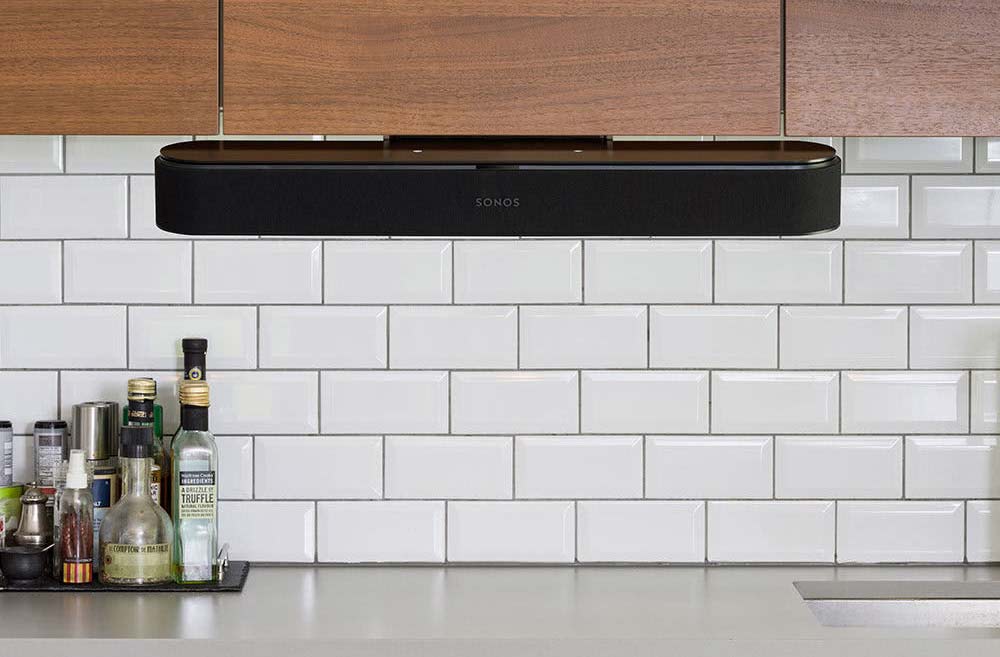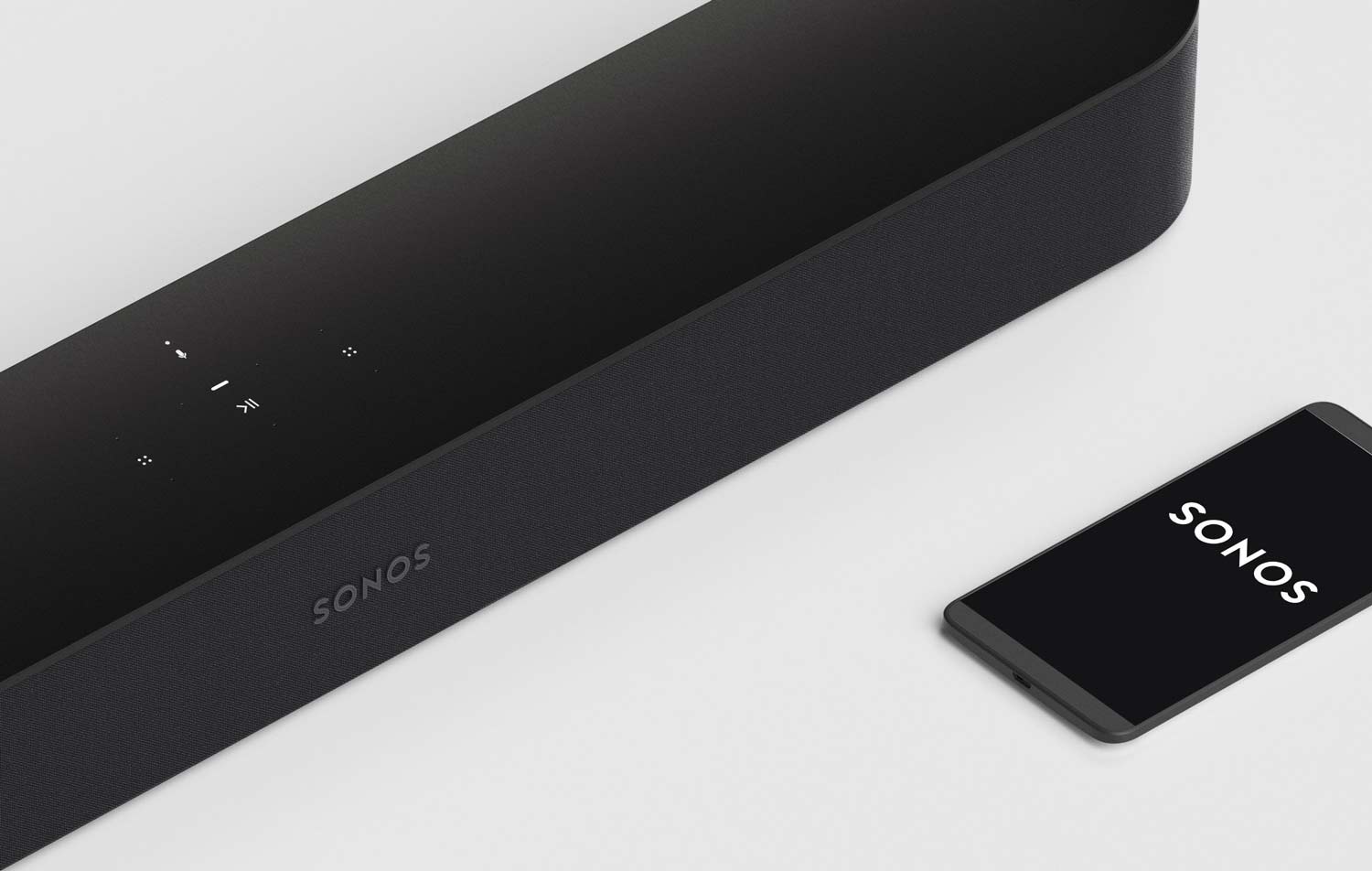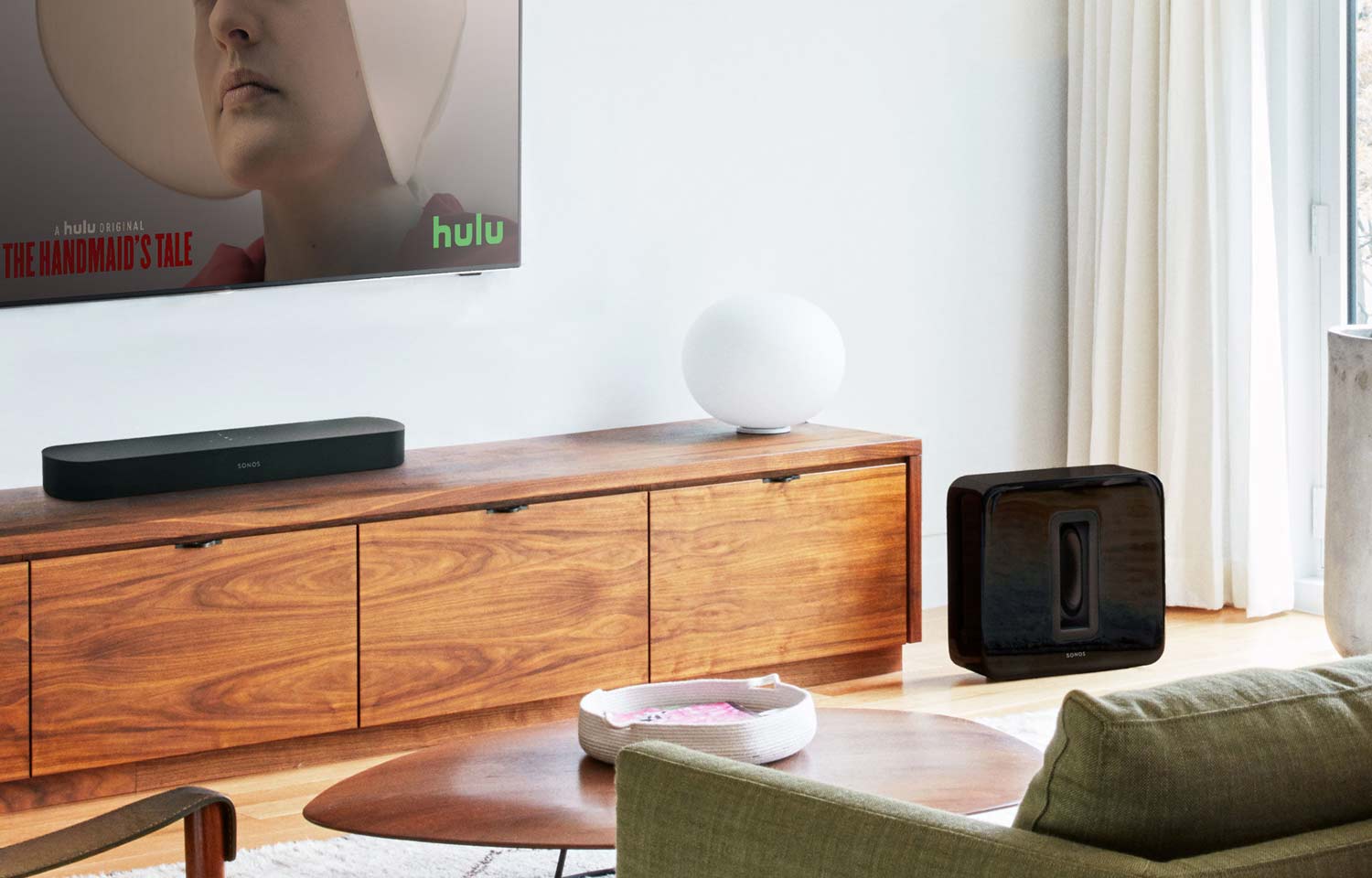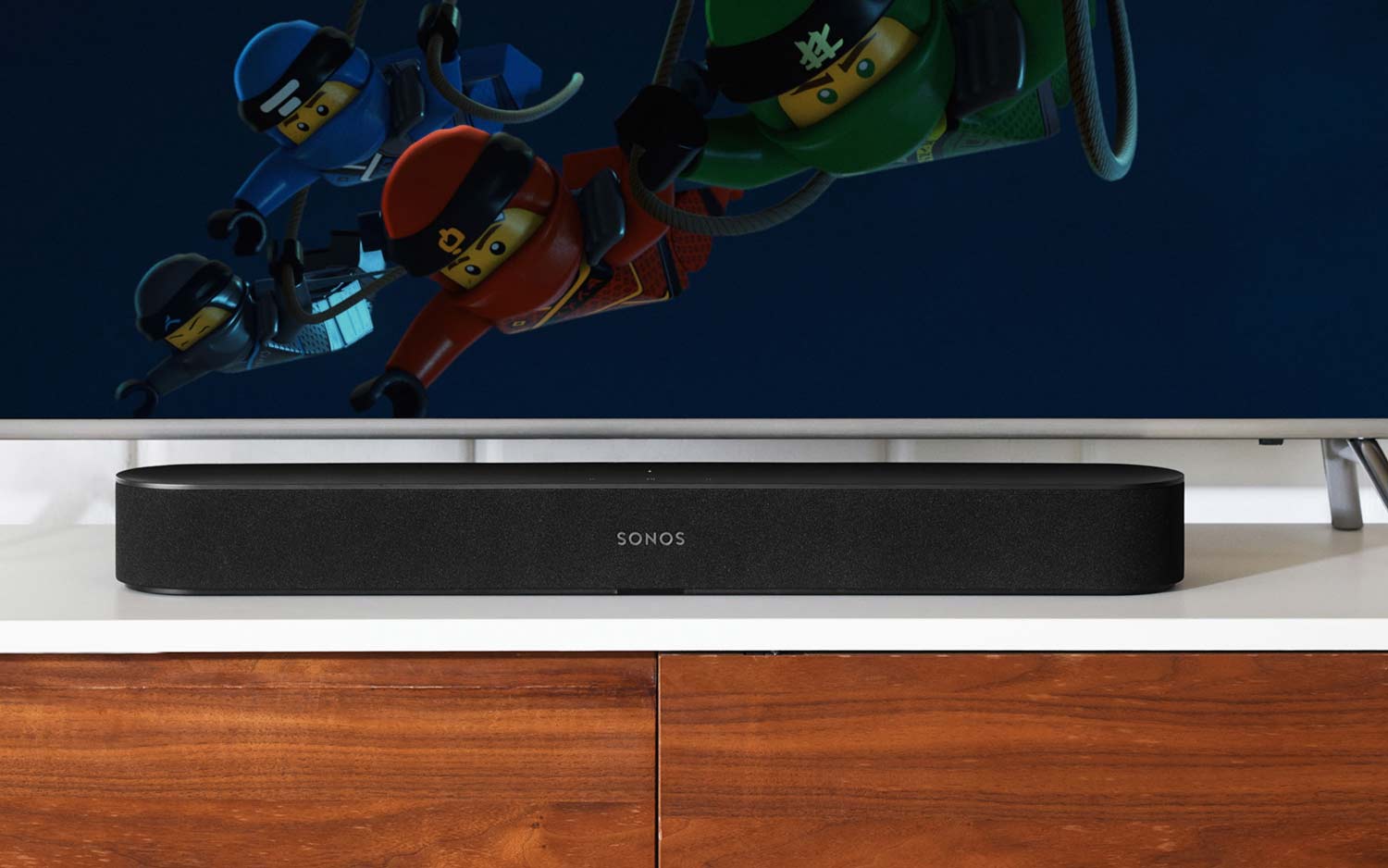Tom's Guide Verdict
The feature-packed Sonos Beam delivers very good sound for a small soundbar, and comes with Alexa voice controls.
Pros
- +
Easy set up
- +
Alexa inside
- +
Wide soundstage
Cons
- -
Bass lacks detail
- -
No Bluetooth audio
Why you can trust Tom's Guide
The Sonos Beam changed course for Sonos soundbars. These have always been very well made, easy to set up and use, and capable of great sound quality — and luckily the Beam wasn't different in these regards. Where it did tread unfamiliar ground is the addition of more high-tech features.
Chief among these was support for Alexa and Google Assistant, so you could choose how to use the integrated smart controls. And while you could never call the Sonos Beam cheap, it was easily among the best soundbars in terms in terms of functionality.
It's been replaced by the $449 Sonos Beam (Gen 2) with an upgraded CPU and new polycarbonate grille, but if you're interested in knowing more about the first-generation version, read our Sonos Beam review below.
Sonos Beam (Gen 1) review: Design
Shaped like a flattened, elongated pill, the 25.6 x 3.9 x 2.7-inch Beam is smaller than most soundbars. But don't let its relatively diminutive size fool you — there's plenty going on inside the unit. It has four woofers and one tweeter, which helps it produce room-filling sound.

The Beam follows the Sonos minimalist aesthetic: A touch-sensitive top lets you adjust the volume, play and pause songs, skip tracks and more. A single LED light shows the soundbar's status. You can also mute the microphone.

You can connect to your TV via HDMI — a first for a Sonos soundbar — or digital optical audio. The Beam uses Wi-Fi to connect to the internet for streaming audio and to connect with other Sonos speakers on your network for multiroom audio. You can also used a wired Ethernet cable for network access.
As with other Sonos soundbars, the Beam doesn't come with a remote. You can control it with your existing TV remote, or, if your TV supports HDMI ARC-CEC, you can use Amazon's Alexa and voice commands to control it.
Get instant access to breaking news, the hottest reviews, great deals and helpful tips.

For example, you can tell it to turn on the display or adjust the volume. I encountered some problems with my LG OLED TV and the Beam when using voice controls; the command for turn on TV didn't work. The Beam also works with Siri thanks to Apple's AirPlay 2 technology.
Sonos Beam (Gen 1) review: Alexa and Google Assistant
Alexa was responsive from across a large room to typical requests: it told me the weather, set a timer and turned on a Wemo Switch. If you have a Fire TV connected as well, you can launch a show on Netflix or Hulu; however, there was some lag after commands before the Fire TV actually did anything. For example, when I asked it to pause a show, it took several seconds before the show stopped playing.
MORE: The Best Products That Work With Amazon Alexa
Alexa also comes in very handy for controlling music playing through the Sonos app. You can play, pause and skip tracks. But it couldn't find playlists I have on Spotify or Apple Music.
The Beam also supports Google Assistant, as of a free May 2019 update. All of Google Assistant's basic voice controls work on the Beam, such as checking the weather, queuing up shows and music and controlling smart home devices. However, you do have to manually switch between Google Assistant and Alexa, so you can't freely talk to either virtual assistant at a time.
Sonos Beam (Gen 1) review: Performance
The Beam produces a wider sound than you'd guess from looking at it, and it delivers balanced treble, midrange and bass. But if you're used to the sound quality of a Sonos Playbar or Playbase, you're unlikely to be wowed by the audio. While it has enough bass, it won't rattle the floor without adding a subwoofer. If you need more low end, you can get the Beam bundled with a subwoofer for $999.

Luke Cage's deep voice sounded resonant and clear on the Beam, and the wide soundstage made the battles throughout The Last Jedi encompassing — though I missed the low-end oomph during the action sequences. The JBL SB450, which includes a wireless subwoofer, felt much more engaging thanks to the deep rumble it produced.
The Beam produces a wider sound than you'd guess from looking at it.
Sonos prides itself on music playback, and overall the Beam meets the high expectations. Florence Welch's vocals on Florence + The Machine's "June" were full and warm. On Guns N' Roses's "Shadow of Your Love," the Beam nicely balanced the distorted guitars and crashing cymbals; the cymbals on the same song through the SB450 sounded harsh and too bright. However, the SB450 produced much stronger bass, as did the Sonos Playbar.
As a small soundbar, the Beam doesn't get extremely loud, but it's loud enough to fill a medium-size room.
Sonos Beam (Gen 1) review: Setup
Sonos makes setting up the Beam relatively painless, even with all the features that are available. You use the Sonos app to get started; if you don't have a Sonos account you'll need to create one. If you connect the Beam to your TV's HDMI ARC port, it can detect your model and settings. You also need to sign in to your Amazon account during set up to enable Alexa.

Few soundbars can match Sonos when it comes to matching sound to the environment. The Beam includes Sonos' TruePlay, which automatically adjusts the speaker's sound to work best in the room in which you've placed it. TruePlay uses your phone's microphone to measure sound throughout the room. You can also manually adjust bass and treble; while watching video, you can also engage Speech Enhancement, which boosts the center channel, or Night Mode, which lowers the bass level.
Sonos Beam (Gen 1) review: Verdict
The Sonos Beam has a lot going for it. At the top of the list, there's Alexa, which brings smart-speaker functions into your living room. With AirPlay 2 and Google Assistant support, this speaker won't become obsolete anytime soon. It delivers wide and balanced sound overall, and you can also adjust the sound to your environment in ways that few soundbars allow. The soundbar's small size can also be a bonus, though in return for the compact form, you give up the booming bass that other Sonos speakers create.
If you're into the Sonos ecosystem and want a real centerpiece for your home theater, you're better off with a $699 Playbase or Playbar. But if big bass isn't important, or you have a smaller room, the Beam will make your ears happy.
As an extra, the Sonos Beam may get a smart upgrade, as Sonos could launch a virtual assistant to take on Google and Amazon Alexa.

Michael Gowan is a freelance technology journalist covering soundbars, TVs, and wireless speakers of all kinds of shapes and sizes for Tom’s Guide. He has written hundreds of product reviews, focusing on sound quality and value to help shoppers make informed buying decisions. Micheal has written about music and consumer technology for more than 25 years. His work has appeared in publications including CNN, Wired, Men’s Journal, PC World and Macworld. When Michael’s not reviewing speakers, he’s probably listening to one anyway.
